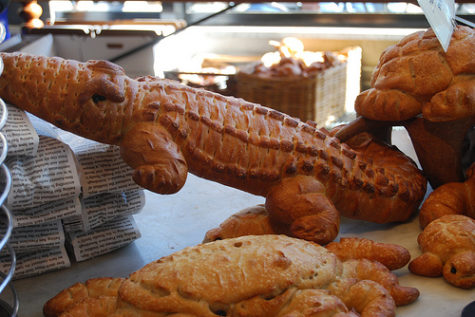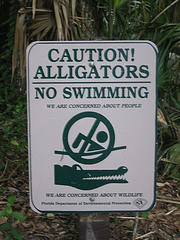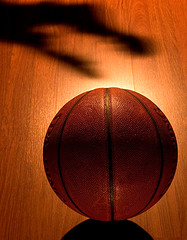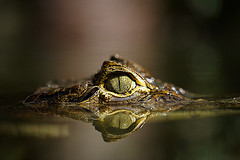I know it’s not Friday, and we don’t really do a lot of penis posts any more. But I felt like with all the uncertainty in the world, I really wanted to revisit this post about alligator penises. It first ran in 2013.

The alligator harvest at Louisiana’s Rockefeller Wildlife Refuge happened every September, so in the fall of 2007, Diane Kelly packed her bags. She wasn’t hunting, but she still had to put her scalpels and knife blades and the rest of her dissection kit in her checked bags. Explaining to TSA that she was going to figure out how the alligator penis worked wouldn’t fly.
Kelly, a researcher at the University of Massachusetts at Amherst, has studied how penises work in everything from rats to turtles, looking mainly at what makes the penis stiff. During graduate school, she scavenged roadkill in Florida to learn more about armadillo penises. Why roadkill? As she told a Story Collider audience this fall, she was a life-long animal lover who was squeamish about sacrificing animals just so she could study them. Then she realized that using animals would be an essential part of her work—and she studied how to do it humanely and to learn the most from each animal as possible.
But still: alligators. She was relieved she didn’t have to hunt for them herself. “When they brought them back they were huge, they were dead and I found them frightening,” she says now. “If I had gone out myself, I would have been lunch.”

Four adult male alligators waited for her when she arrived in Louisiana. One of these was 4.62 meters long. At first, this didn’t sound like a very big number to me. But then I realized that if that alligator had visited the swimming pool I went to as a kid, it could have dangled by its tail from the high dive and stretched its body from springboard to surface. Its jaws would be well underwater—it could easily snack on a passing swimmer. (Alligators in the swimming pool are, in fact, something that I used to worry about.)
Almost nothing is known about how alligators copulate, since it all happens in the water. But alligator penises had never been seen to change shape or stiffness. In all the other species Kelly had studied—even in the ones that had bacula, or penis bones—inflation was a key part of the penis’s ability to get the job done.
Kelly started work at the wildlife refuge’s field station first thing in the morning and worked until dinner, with a quick break for lunch. Sometimes it was quiet. Sometimes the radio was on. If it was on, it stayed at whatever station it had been tuned to that morning. She didn’t want to get gunk on the dials.
She covered her camera in a plastic bag with only the lens poking out. That way, she didn’t have to take off her gloves to change the settings. This was gross anatomy—she would do the detail work later in her lab in Amherst. Gross means big, Kelly says, “but sometimes, gross is gross.”
For each alligator, she took the section from the pelvis to the tail and set it up on the table inside the field station.
She took photos before she started. Click click click. She removed a layer of alligator. Click click click. She took as many photos as she could; she sketched what she saw into her notebook. Working this way, she could study one alligator a day. Sometimes she came back after dinner to finish.
Kelly usually does penile inflation tests on the species she studies: stick a syringe into the appropriate cavity and fill it with saline. It’s something you can only do on fresh tissue—preserved penises can’t be inflated, so having the refuge’s alligators was a rare chance to see exactly what was going on.

The inflation test had always worked in birds and mammals, and on the outside, an alligator’s penis looked something like a mammal’s. But when Kelly thumbed down the plunger this time, nothing happened. None of the alligator penises got longer. And they didn’t get wider, either.
Later, when she got back to her lab, she’d stain the tissues and see the alligator’s penis was just packed with intertwined collagen, with few spaces for blood or lymph to rush in.
At this point, if you were me, you might say something like, “An alligator never has to worry about shrinkage!” But if you’re Diane Kelly, you say, “My mind was blown! There was something really different going on here.”
But how does an alligator, which keeps its penis tucked inside its cloaca, get this permanently-stiff organ within range if it doesn’t get bigger? In Louisiana, Kelly tried to find out.
Other animals that keep their penises under cover have muscles attached to the penis that help it pop out of the cloaca. But the alligator doesn’t have any muscles that attach directly to its penis. So Kelly isolated nearby muscles and pulled on each in turn to see what happened.
When Kelly pulled on a muscle within the cloaca itself, the alligator’s penis popped out. (One of Kelly’s colleagues has a video of this happening spontaneously—he was dissecting a recently-deceased alligator when a metal instrument depolarized the muscle and the penis snapped into view. Kelly says that everyone in the video jumps back.)

At the end of her time in Louisiana, Kelly packed everything up in formaldehyde, loaded her samples into coolers and shipped them back to her lab in Amherst. There, she looked at tissues, she examined the intricate cross-linking of collagen. Her account of the alligator penis appears online this week in The Anatomical Record.
Some day, Kelly is going to try to trace the lineage of the penis from the alligators and crocodiles—which she imagines might have a similar system–to the birds. In the meantime, other penises are calling. Monotremes, the egg-laying mammals like platypuses and spiny anteaters, fascinate Kelly. She encouraged me to check out the four-headed echidna penis. Only two of the heads ejaculate.
If you’re me, when you first see the video, you might say something like, “Ack!” and not be sure whether to be frightened or enthralled. But monotremes’ penises may have similarities to two-headed penises of snakes and lizards. And because an echidna also stows its penis inside a cloaca when not in use, it’s a bit like a turtle’s penis. And an alligator’s, too.
So if you’re Diane Kelly, you say, “It’s pretty amazing.” And then I remember that Kelly once had to get over a little queasiness, too, so I watch the echidna penis again.
**
Images from Flickr users
Top: THE Holy Hand Grenade! Next: jamieca Then: iDream_in_Infrared Bottom: Dmitry Valberg